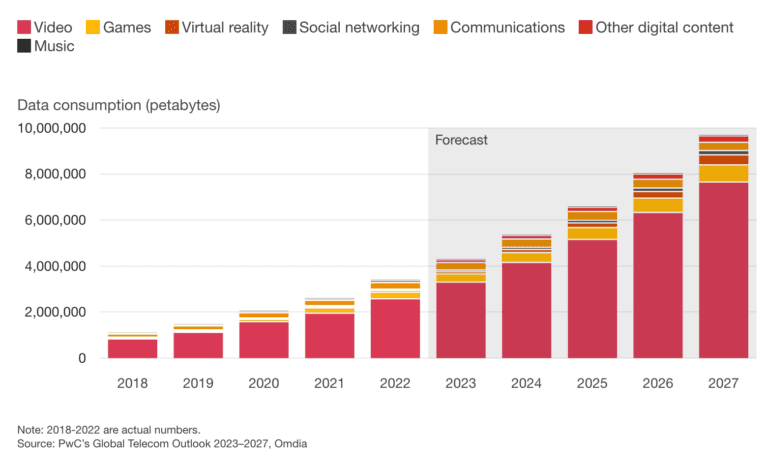In the nineteenth century in England, a group of handloom weavers, known as the Luddites, rioted and destroyed new factory power looms because introducing this new machinery would put them out of work. The Luddites did not succeed in their goals to prevent the deployment of new technology, and nowadays, the term is applied to people blamed as lacking in vision when it comes to similar types of change.
Since their time, I daresay there have been many technological revolutions that could be described as replacing people’s jobs. Google came up with lift (elevator) operators, switchboard operators, cashiers, factory workers, warehouse workers, data entry clerks, bank tellers and travel agents. Coincidentally, my wife’s grandfather, who lost an arm in the First World War, was a lift operator on the SS Lusitania.
The latest scaremongering has come from introducing AI technology to the point where the UK government saw fit to hold a global conference on the subject.
As someone who has worked all my adult life in tech industries, I believe that we should embrace new tech and that more good will come from it than harm. The one thing I can tell you for sure is that the only constant is change.
The telecommunications industry is going through big changes right now. In the first instance, all the usual progress with services such as internet connectivity continues. My first internet connection was a 56k dial-up modem. This progressed through ISDN2, 1 and 2 Mbps (and up) ADSL, FTTC, Docsys and now 1Gbps symmetrical FTTP (with cable backup).
I remember the fuss when mobile data moved from 2G to 3G. 4G was a big step forward, and now all the shouting is about 5G. While on a weekend away, I recently disabled Wi-Fi on my laptop and opted to use my phone as a hotspot because I was getting orders of magnitude better connectivity via mobile.
All these improvements in connectivity have spawned massive growth in applications and, in our telecoms world, stimulated a revolution in the use of Unified Communications tech with Covid and working from home acting as the catalyst. Having raced to the bottom of the pricing curve for many of these connectivity services, Telcos faces challenges when it comes to guiding its business forward and maintaining profitability.
This is not new news – operators have shown differing degrees of success with their attempts to provide newly added value services, bundling streaming video, music and security, for example, on top of telephony, mobile and broadband.
The need to maintain profitability and maintain flexibility to be able to launch new services easily is what is pushing many towards the cloud. This is not just for storage. The chart below, taken from PWC’s Global Telecom Outlook, shows a massive growth in data usage driven first by video, followed by communications.

At a time when telcos are not only having to offer new and innovative services, they are also having to invest huge sums in being able to deliver these services to their customers. Much of this is cloud-based due to its lower capex business model.
It will come as no surprise that at the same time as having to invest in this new infrastructure, telcos have to cut back on operational spending, which is most openly manifested in staff count reductions. A quick search reveals the following public announcements:
TELEFONICA: The telecoms operator seeks to cut around 5,100 jobs in Spain by 2026, a union spokesperson said on December 4.
VIRGIN MEDIA O2: The UK mobile operator plans to lay off 2,000 employees, the Telegraph reported on July 24.
VODAFONE: The UK telecoms group on June 15 agreed with unions over 1,003 job cuts in Italy and 11,000 jobs globally over three years.
Luddite attitudes have long since disappeared from the scene in tech industries, and most people understand the need to cut costs and change. However, staffing cuts on their own are not enough and have to go alongside other improvements to a business that will include some of the following areas.
- Leveraging Technology:
- Automation: This is a major focus area, from automating network management and provisioning to using AI and machine learning for customer service and fraud detection tasks. This frees up people for higher-value tasks and decreases errors.
- Cloud Migration: Moving to the cloud can offer significant cost savings on infrastructure, data centre maintenance, and power consumption. By adopting a virtualised network architecture, telcos can also gain flexibility and scalability.
- Network Optimization: Utilising data analytics and AI to optimise network performance can reduce energy consumption, prevent outages, and minimise the need for manual intervention.
- Software Defined Networking (SDN): This technology allows telcos to centralise control over their network and automate processes, leading to faster provisioning, easier management, and reduced costs.
- Optimising Business Processes:
- Streamlining Operations: Reviewing and improving internal processes can uncover inefficiencies and redundancies. This could involve standardising procedures, adopting agile methodologies, and eliminating unnecessary paperwork.
- Outsourcing Non-Core Activities: Focusing on core competencies and outsourcing non-critical tasks like billing or call centre operations can free up resources and potentially offer cost savings.
- Strategic Partnerships: Collaborating with other vendors or service providers can access expertise, share resources, and negotiate better deals on equipment or services.
- Improving Customer Experience:
- Customer Self-Service: Investing in user-friendly online portals and mobile apps can empower customers to resolve issues themselves, reducing the need for costly call centre interactions.
- Proactive Maintenance: By utilising data analytics to predict potential problems, telcos can proactively address them before they impact customers, minimising service disruptions and reducing repair costs.
- Personalisation and Value-Added Services: Tailoring offers and services to individual customer needs can increase loyalty, reduce churn, and potentially generate additional revenue streams.
It is important to note that the most effective Opex reduction strategies will be specific to each telco, depending on their existing infrastructure, market position and business goals. A multi-pronged approach combining technology adoption, process optimisation, and customer-centric initiatives will likely yield the best results in the competitive telecommunications landscape.
Netaxis’ own investments in technology and market development fit very neatly into most of the areas referenced here. Many telcos see them as a key part of their strategy for coping with the changes that they are undoubtedly going through.
Ready to elevate your telecoms services?
Get in touch to see how Netaxis can enhance your UC proposition.





